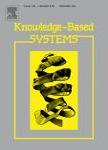版权所有:内蒙古大学图书馆 技术提供:维普资讯• 智图
内蒙古自治区呼和浩特市赛罕区大学西街235号 邮编: 010021

作者机构:Huazhong Univ Sci & Technol Sch Mech Sci & Engn Wuhan Peoples R China Huazhong Univ Sci & Technol Sch Naval Architecture & Ocean Engn Wuhan Peoples R China Wuhan Text Univ Sch Mech Engn & Automat Wuhan Peoples R China
出 版 物:《KNOWLEDGE-BASED SYSTEMS》 (知识库系统)
年 卷 期:2022年第252卷
核心收录:
学科分类:08[工学] 0812[工学-计算机科学与技术(可授工学、理学学位)]
基 金:National Natural Science Foundation of China Key Research and Development Program of Hubei Province, China [2021AAB001]
主 题:Degradation assessment Autoencoder Growing self-organized map Transfer learning Deep learning
摘 要:Health indicator (HI) construction is the most significant task of degradation assessment (DA) that facilitates prognostic and health management of rotating machinery. Many stacked autoencoder (SAE) models represented by CNN-based and RNN-based SAE have been applied to the field of DA. However, the former has a small receptive vision which makes it weak in encoding time-series information, while the latter can easily encounter the problem of overfitting or parameter expansion. To solve these problems, this paper proposes an embedded LSTM-CNN autoencoder to extract trend features that contain both local characteristics and degradation trend information from vibration data. And, a transfer learning-based two-phase network training algorithm is designed to enhance the ability of noise filtering of the model. Then, HI is obtained by fusing the extracted trend features with a growing self-organized map. Finally, two case studies are implemented by using bearing datasets to verify the proposed method. The results show that HI gained by the proposed method is more effective than that by other existing methods. Moreover, the goodness-of-fit of polynomial degradation models with the HI is analyzed. (c) 2022 Elsevier B.V. All rights reserved.